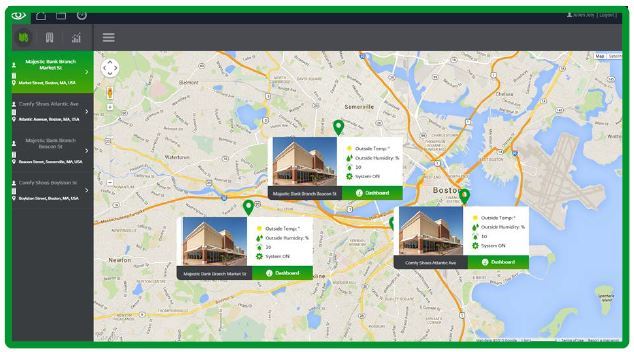Multi-site Facility Management: The Challenges
In a perfect world, facility management would be seamless. And, multi-site facility management would be a piece of cake. Buildings would have optimized operations, energy would be consumed efficiently, occupant comfort would be ideal, and repair emergencies would be nonexistent. But, we don’t live in a perfect world. However, that’s not to say that we can’t live in an optimized one! This is the first of a 6-part series that outlines the challenges of – and solutions to – multi-site facility management. To kick us off, let’s focus on the challenges.
alligator swampThe challenges faced by facility managers of multi-sites reminds me of the comical-yet-true saying about alligators, swamps and rear ends, “The objective of all dedicated employees is to thoroughly analyze all situations, anticipate all problems prior to their occurrence, have answers for these problems, and move swiftly to solve these problems when called upon. However, when you are up to your rear end in alligators, it is difficult to remember that your initial objective was to drain the swamp.”
Feel familiar? This is quite tongue-in-cheek, but also quite realistic of the “to do” list on every single facility manager’s desk. For sure, facility managers are kept quite busy. For most, the amount of energy wasted is not their top priority each day. Things like valve actuator repairs, maintenance alarms and occupant requests often trump any sort of efficiency effort. However, as this blog series will reveal over the next few weeks, it is possible to automate efficiency in multi-sites – and to monitor and control it remotely. Thus, facility managers are able to accomplish more without adding more time. Yay!
But, before we jump to the solution, let’s continue peeling back the onion of challenges. For multi-sites, they are plentiful.
Facility ManagerThe core challenges are obvious. If you’re the owner of a multi-site operation, or in charge of managing it, you already know how imperfect things can be. Budgets are tight, resources are scarce and every building has unique requirements leading to different levels of building automation control. These levels range from simple (stand alone) to sophisticated (integrated or full blown Building Management System) and this inconsistency across the enterprise certainly adds to the daily struggles facility managers must deal with.
Also, installing, integrating and maintaining automation systems can be costly. (They also can be cost-effective, as we will see later in this series.) Additionally, if a space is rented then install options could be constrained, restricting what a facility manager can do. This also restricts the savings and benefits you can achieve.
And, let’s not forget the amount of data produced by your buildings. Say you have a room with several temperature gauges, flow meters, air quality sensors and other field devices each producing at least one – and probably more – readings a minute. Now multiply that by many rooms and across several buildings. Then take all that data you’ve gathered and try to use it to produce reports and carry out analysis – all in an effort to improve operational efficiency. Sounds daunting, I agree. Without automation or a building management system, it’s not a simple task.
Example of multi-site management dashboard from cloud software
So, certainly there are challenges with efficiently managing multi-sites. And understandably, for many these challenges seem too overwhelming or too expensive to overcome. Many people fail to realize that building management is not just for large buildings anymore. As such, many building owners/managers are missing ample opportunity. This missed opportunity is also a challenge – a challenge to your bottom line and missed profitability.
Optimizing operations is good for business – this is a given. What is not “a given” is the actual impact optimization can have. For one thing, up to 30% of the energy consumed by commercial buildings is wasted. That is a huge number and it is precisely what I mean when I say that it can be turned into an opportunity. And, that waste has a ripple effect. Studies have proven that people are more productive if they’re more comfortable. Four out of five workers find it difficult to concentrate and three out of five take up to 25% longer to complete a task if they’re too hot, according to the World Green Building Council. So, as we peel back the layers of that onion we see the attraction of this investment more and more. Efficiency through controlling the environments in your multi-sites can translate into a larger and more profitable bottom line.










